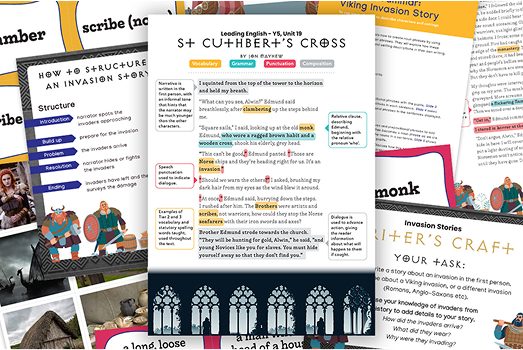Should pupils be writing as much as possible? Or is it better to focus on shorter pieces that are carefully crafted and technically accurate?
The primary English National Curriculum has a strong technical focus. Its aim is clear: pupils should leave KS2 with secure transcription and composition skills, ready for secondary school.
That means teaching the fundamentals – grammar, punctuation and sentence control – with clarity and consistency. These are the building blocks of future writing success.
Yes, pupils need opportunities for extended and imaginative writing. But high-quality, refined work that demonstrates control and accuracy will do far more to secure long-term progress than rushed, lengthy pieces. It’s a classic case of quality over quantity.
The Writing Framework agrees
The government's new Writing Framework echoes this thinking. It states:
“Writing should not be rushed: pupils should concentrate on the quality of their writing rather than producing large amounts of lower-quality text.”
And under Composition, it advises that:
“The school’s approach to the teaching of writing affords pupils sufficient time for planning, writing and reviewing their work and emphasises quality over quantity.”
So, what can your school do to align with this approach?
1. Clarify your school’s vision for writing
Does everyone on your team understand what good writing looks like – and why it matters?
Take time to revisit your school’s expectations around writing as a leadership team and with staff. Encourage professional dialogue and listen to concerns – particularly around the balance between creativity and technical accuracy. The two aren’t mutually exclusive, but it’s important to explain how they can work together.
2. Review your curriculum’s small steps of progression
Now’s a good time to revisit your medium-term plans. Are transcription and technical skills woven through each unit – not just reserved for grammar lessons?
Pupils need explicit, scaffolded teaching to master the mechanics of writing. If your curriculum lacks this focus, small changes can make a big difference.
3. Make CPD meaningful and collaborative
Shared understanding doesn’t happen by accident. Use CPD to build common language, clear expectations and practical strategies.
Don’t assume knowledge, but don’t patronise either. Show exemplification. Use real examples from across your school. Share and celebrate what good looks like – together.
4. Establish whole-school approaches to modelling
High-quality writing starts with clear modelling. But modelling well is hard – especially under pressure.
The Writing Framework (and us here at Leading English) advocate an “I do, we do, you do” structure. This works best when teachers understand how each phase looks in practice. Spend time breaking this down, and help colleagues plan effectively to avoid cognitive overload.
5. Strengthen editing and redrafting
These are essential – and often underdeveloped. Redrafting isn’t copying out in best handwriting. It’s about refining, reshaping and improving writing for a specific purpose and audience.
Support teachers to build confidence in how to model and guide this process effectively.
We can help
At Leading English, we work alongside schools to:
- Develop curriculum, pedagogy and assessment in writing
- Provide planning tools, frameworks and practical guidance
- Deliver coaching and consultancy that supports sustainable leadership
- Equip teachers with high-quality resources to boost progress and enjoyment





